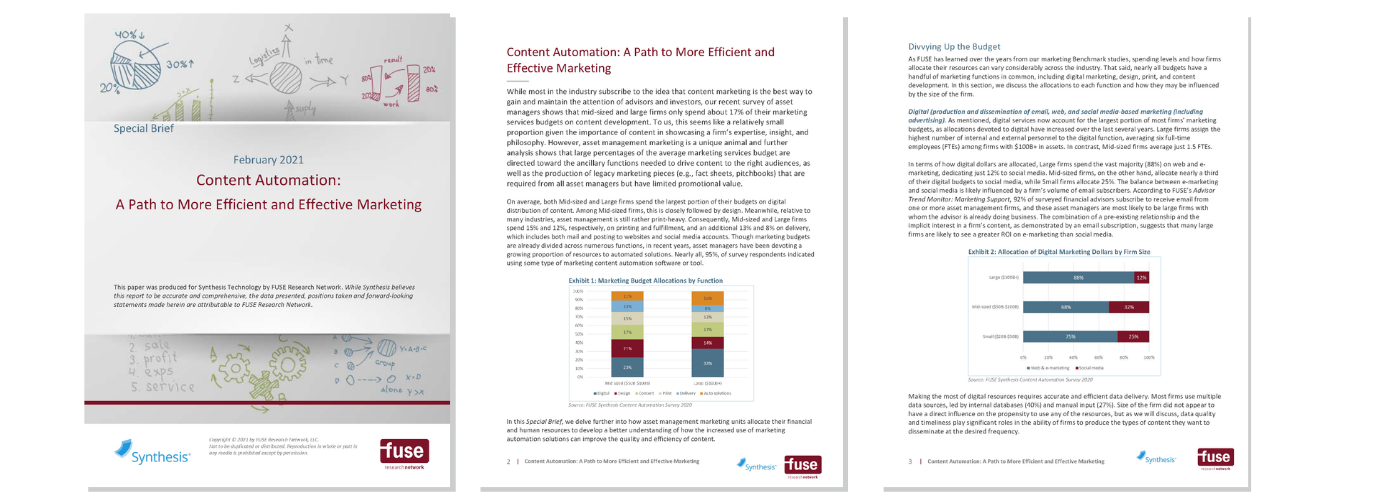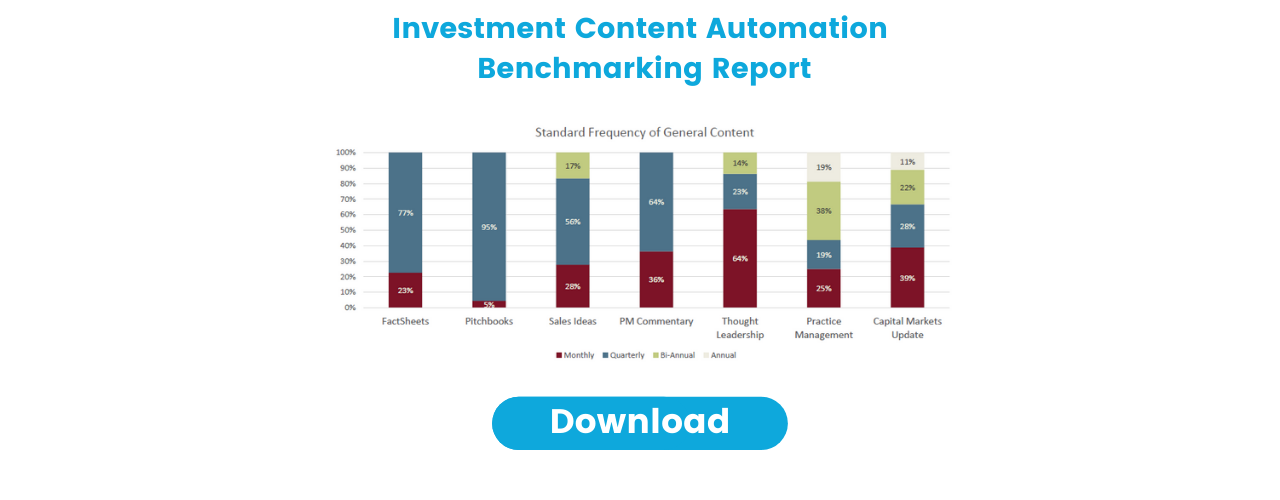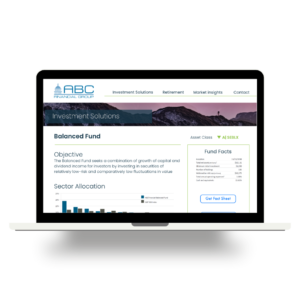Using Automation to Fuel Investment Marketing Programs

Many factors influence the volume of content that asset managers produce. Some, such as the merging or closing of funds, help to alleviate the production burden, but most continue to expand the demands placed on marketing units. In a recent study of asset managers, we asked about their marketing processes and use of automation to fuel marketing programs.
Improving the Efficiency and Value of Content Through Automation
When asked what is causing the change in marketing output at their firms, the largest percentage (28%) said that increasing demand for market and portfolio manager commentary was the biggest factor affecting production. This is unlikely to change in the foreseeable future as the course of the pandemic and its impact on the global markets and economy remain very fluid.
Given its ability to engage with clients and prospects remotely, marketing will continue to play an outsized role in firms’ distribution plans, but for many asset managers, market and economic uncertainty will prevent them from significant investments in their marketing units. However, marketing content automation is one area in which nearly all firms plan to allocate a larger portion of spending. We believe that in most cases this will be money well spent, as content automation solutions have the potential to produce near-term efficiencies, as well as accelerate progress toward long-term goals.
The marketing functions for which automation solutions can be explored are innumerable but based on our review of how marketing budgets are being spent, a few came to mind. The first is design, where the seemingly disproportionate share of the marketing budget that some firms are spending suggests that they may be redesigning content when it simply needs to be updated. For instance, fact sheets may be manually modified or redesigned each month or quarter, which uses a lot of design resources. Services exist that can automate the production process, freeing up the time of designers and improving the accuracy and look of the content.
Second, as digital dissemination of content continues to grow, some firms are building their digital strategies on an ad hoc basis, which over time makes it difficult to see where inefficiencies and lost opportunities lie. Many services and programs currently exist or are likely to emerge to help firms schedule and publish content to social media platforms, extract more and better data from their web and social media platforms, and customize client journeys through the website.
Finally, despite the multitude of automated solutions available, most are only as good as the data that goes into them. While firms appear to be generally satisfied with external providers like Morningstar, many still have issues with internal data. The industry’s approach to acquiring data, then extracting, analyzing, and disseminating it has been slow to develop and often runs into various internal obstacles, such as disagreements over ownership, that can further compromise the value of internally sourced data. For many firms, outside perspectives from process and automation specialists can help to improve the quality of the data and thus the efficiency of all the other functions that rely on it.
The Growing Use of Automation
Of those surveyed, 95% responded that they use some type of marketing content automation software or tool. Not surprisingly, most firms utilize these resources to automate fact sheet and pitchbook processes, the two types of marketing content that are the most standardized and data-dependent, and the least narrative-driven.
Among firms that use content automation in the production of fact sheets and pitchbooks, 89%, and 81%, respectively, use vendor-provided solutions as opposed to proprietary solutions. This implies that there are several competitively priced solutions available that make it more cost- and time-efficient to use an outside provider than develop and maintain an in-house solution.
The use of outside automation vendors is much less prevalent in the production of commentaries, with three-quarters of firms using an automation solution indicating that it was developed in-house. This makes sense, as commentaries offer an opportunity for firms to differentiate themselves by establishing an authentic style and tone, two things that are still difficult to replicate with an outside solution. Regarding portfolio manager commentaries, specifically, just 9% utilize some type of artificial intelligence or robo-writing; however, another 18% said they plan to do so in the next 12 months. This suggests that a growing number of firms may be looking for ways to more efficiently allocate portfolio managers’ time.
While most firms want their portfolio managers to spend most of their time managing money, over the last several years it has become clear that portfolio managers play an important role in content marketing. As product selection has become more process-oriented (as opposed to performance-based), the input of portfolio managers is required to effectively and convincingly communicate how a product’s strategy is being managed in response to changing market, economic, and political conditions, but the ability and willingness to participate in content development varies by portfolio manager. While artificial intelligence or robo-writing programs can help extract the information marketing units need from portfolio managers, we would caution against relying on them too extensively for risk of losing the firm’s authentic voice.
…no firms indicated that they had decreased their use of marketing automation and content automation solutions, while 45% said they have increased their use of these resources.
This post was written for the Synthesis Technology blog by Robert Kennedy, Director of Relationship Development at FUSE Research Network.
For a full report of the findings of this survey, download the Content Automation whitepaper.









 Compare the Top 3 Finserv Content Automation Vendors [White paper]
Compare the Top 3 Finserv Content Automation Vendors [White paper] Create Pitchbooks the Drive Sales [White paper]
Create Pitchbooks the Drive Sales [White paper] Build vs. Buy: Should Your Financial Services Firm Outsource or Insource Marketing Technology? [White paper]
Build vs. Buy: Should Your Financial Services Firm Outsource or Insource Marketing Technology? [White paper]  10 Tips for Rebranding your Fund Marketing Documents [White paper]
10 Tips for Rebranding your Fund Marketing Documents [White paper]


